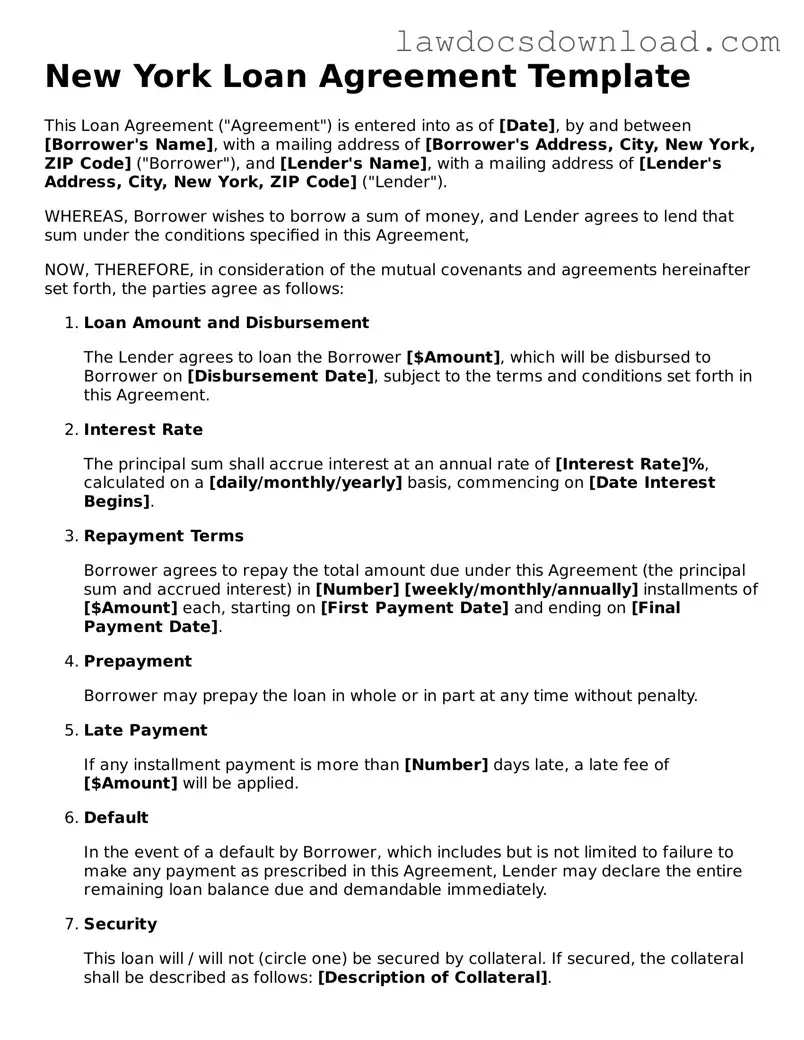The New York Loan Agreement form closely resembles a Promissory Note. Both documents are binding and detail the terms under which money is borrowed and must be repaid. Where they align is in their primary purpose: to clearly outline the loan amount, interest rate, repayment schedule, and the consequences of default. However, a Loan Agreement typically encompasses more comprehensive terms and conditions, including confidentiality clauses and dispute resolution mechanisms, making it more detailed.
Similar to the New York Loan Agreement form, a Mortgage Agreement also involves a lending and borrowing dynamic, but specifically ties the loan to real estate property as collateral. This similarity lies in the safeguard mechanisms for the lender, ensuring there's a secured asset that can be pursued in the event of non-payment. The difference primarily lies in the document’s application and the inclusion of property-specific terms in a Mortgage Agreement.
A Personal Guarantee is another document that shares attributes with the New York Loan Agreement, especially when loans require a guarantee from an individual apart from the borrower. The similarity rests in providing security to the lender that the loan will be repaid—either by the borrower or, in case of default, by the guarantor. Unlike a Loan Agreement that is between the borrower and lender, a Personal Guarantee engages an additional party to cover repayment risks.
Similarly, a Line of Credit Agreement is akin to the New York Loan Agreement in that it governs the borrowing of funds, but it differs in its flexibility. It allows the borrower to draw funds up to a certain limit over a period of time, unlike a loan agreement which involves a lump-sum disbursement. They share the objective of specifying terms under which money is lent, but the Line of Credit Agreement offers a reusable credit mechanism, making it unique.
An Installment Sale Agreement shares a common purpose with the New York Loan Agreement—both involve payment over time. However, an Installment Sale Agreement is typically used for the purchase of goods or property, where the buyer pays for the item in periodic installments. While both documents outline payment schedules and terms, the Installment Sale Agreement also directly ties to the transfer of ownership of an asset.
Equally, a Lease Agreement, while primarily used for renting property, shares the structured payment agreement feature with the New York Loan Agreement. Both set forth payments terms, albeit for different reasons—one for borrowing money and the other for the right to use an asset. However, they intersect in detailing the financial obligations of the parties involved, including the amount and timing of payments.
Finally, a Business Partnership Agreement can resemble the New York Loan Agreement in scenarios where funding is provided within the framework of a partnership. It outlines the terms under which capital is introduced into the business, expectations for return, and financial management of the partnership. While focusing on the broader governance of a partnership, when it includes provisions for financial contributions, its function parallels the clarity and enforceability of loan agreements.
